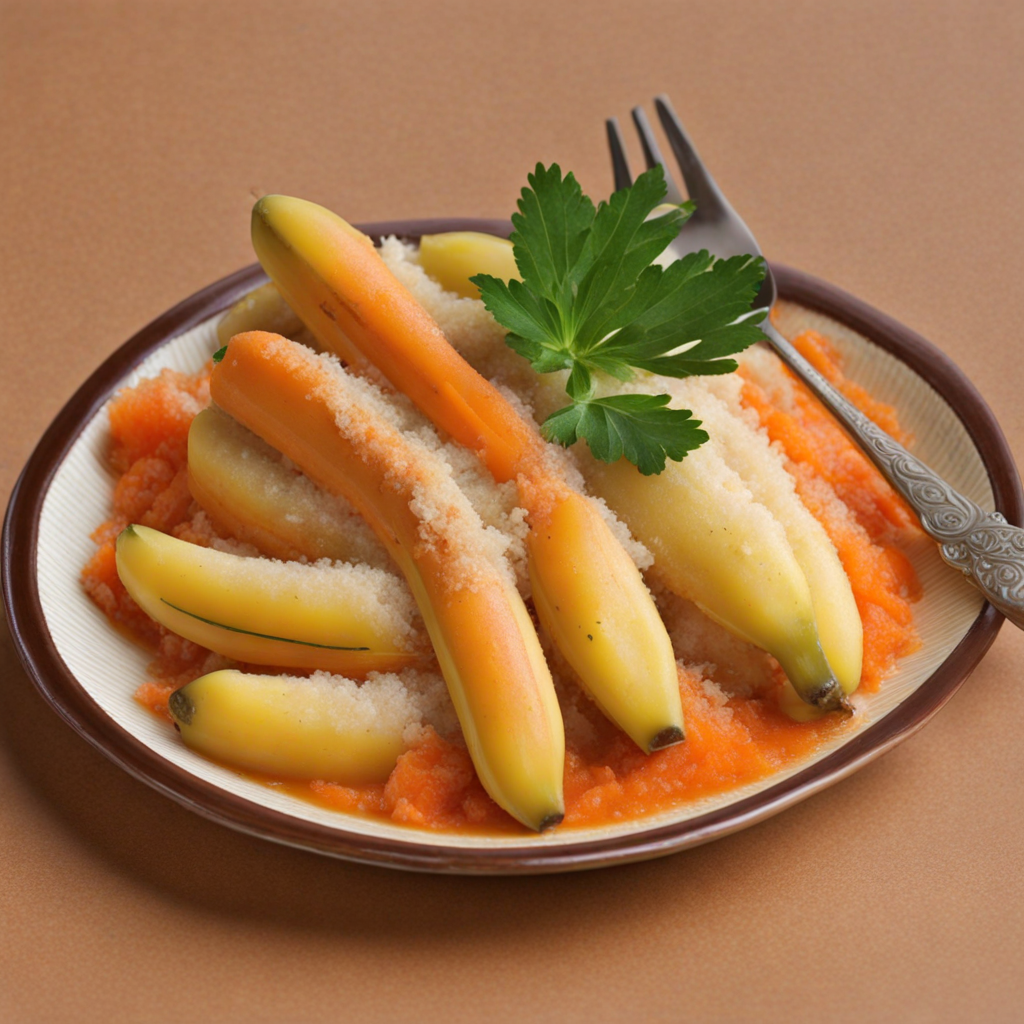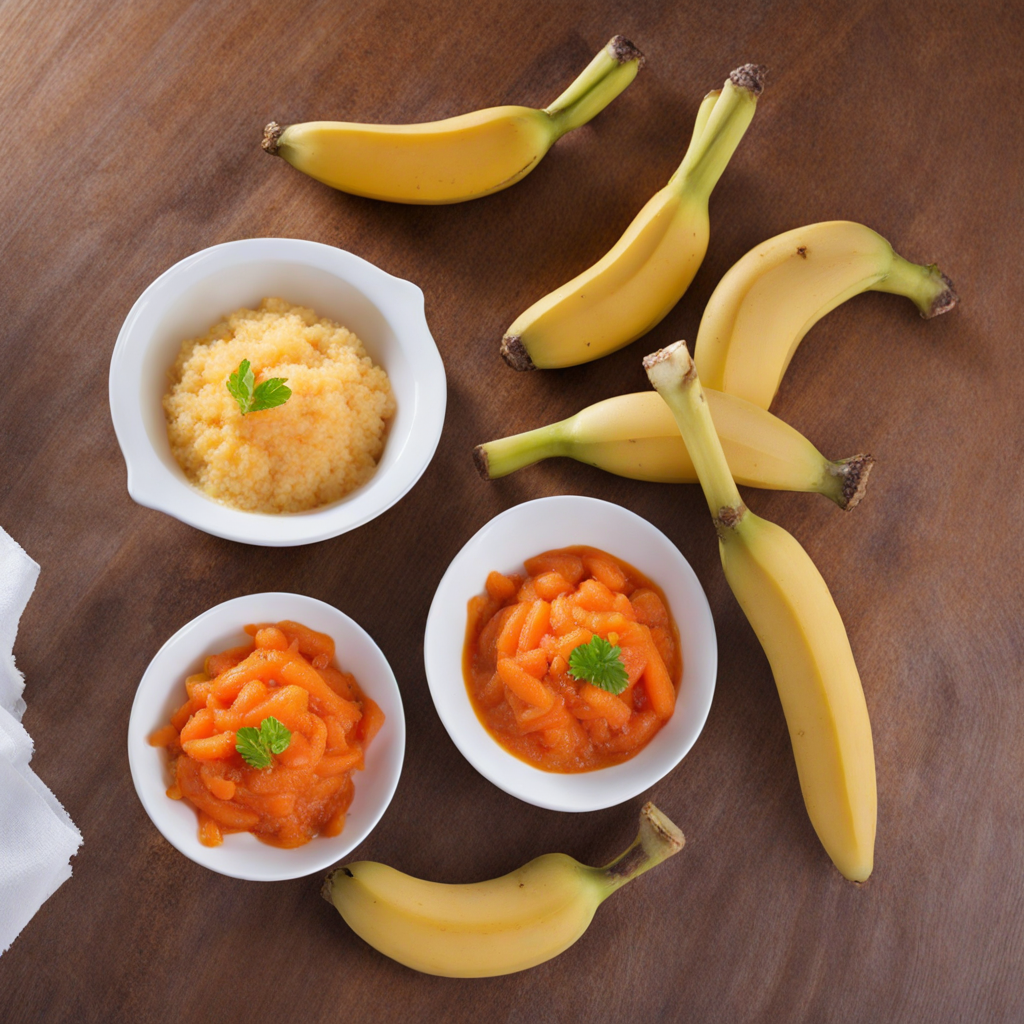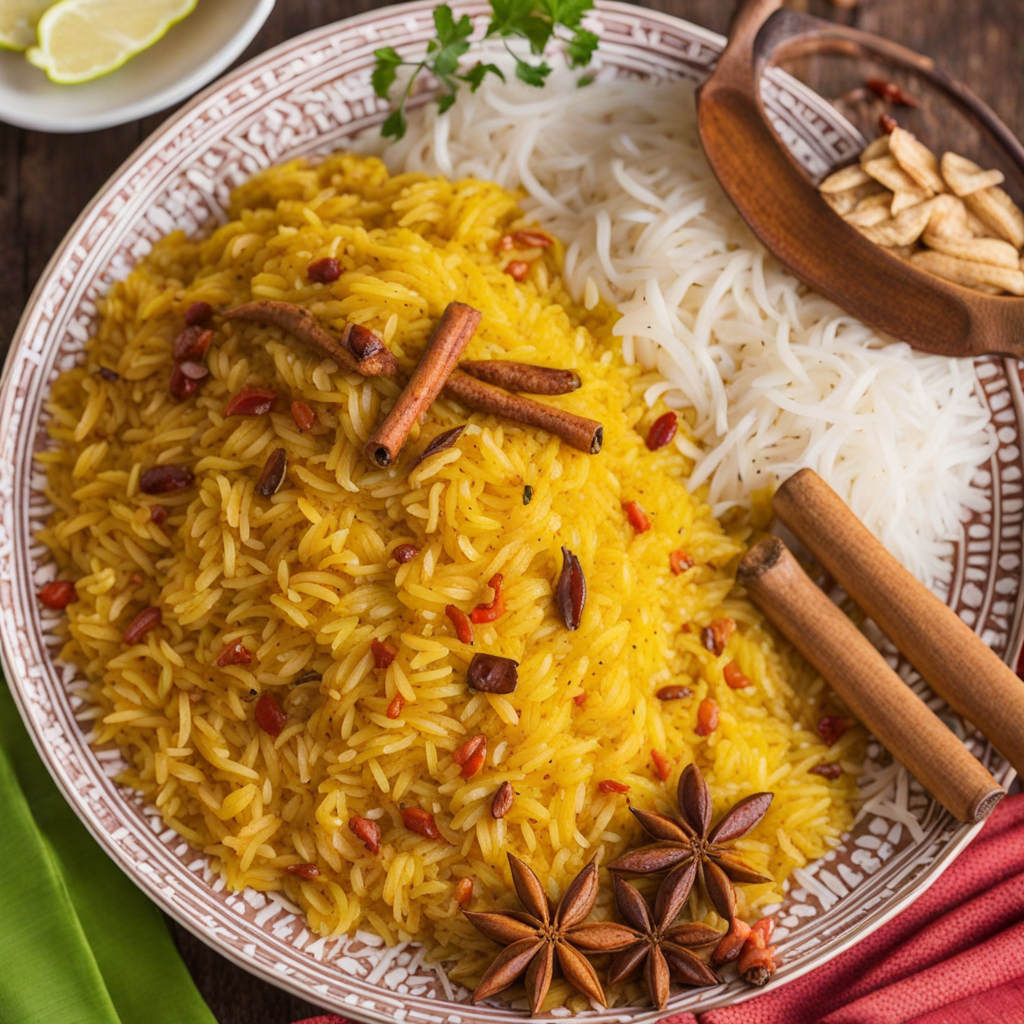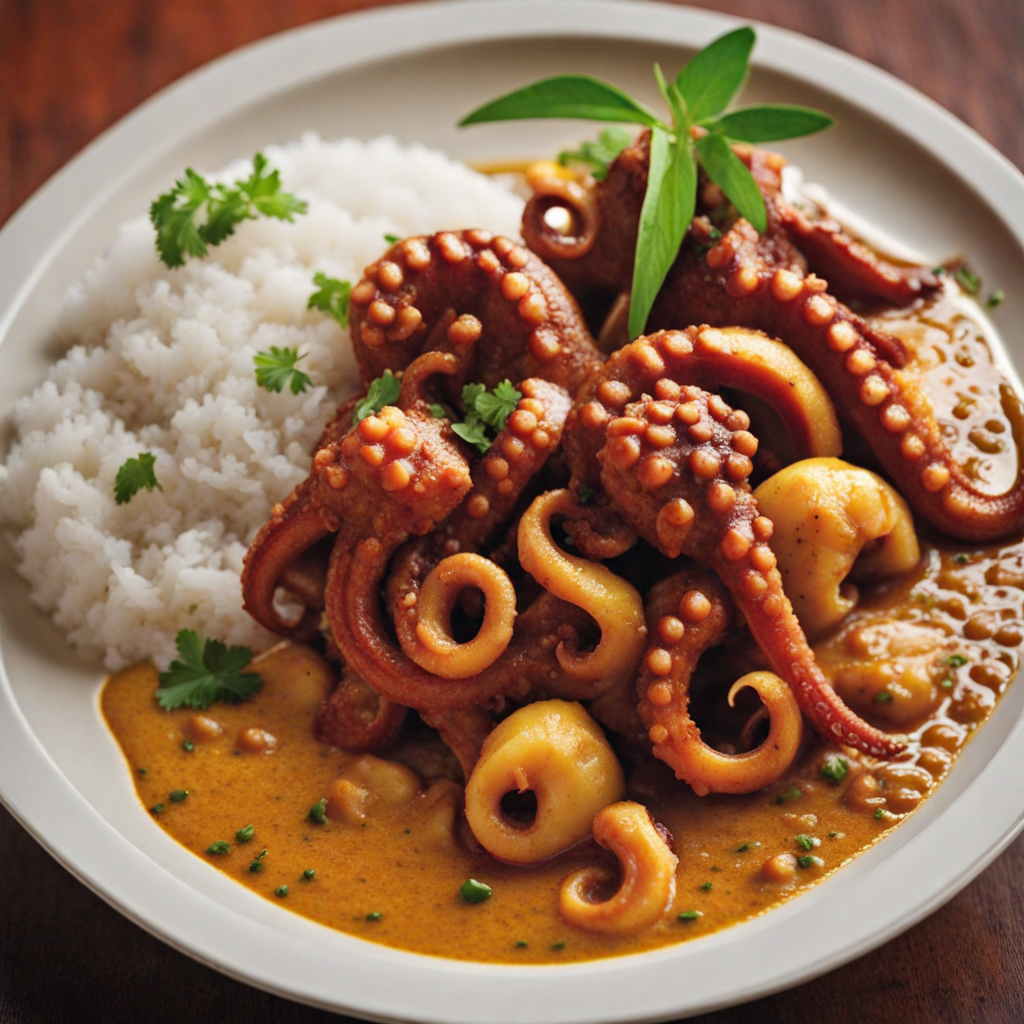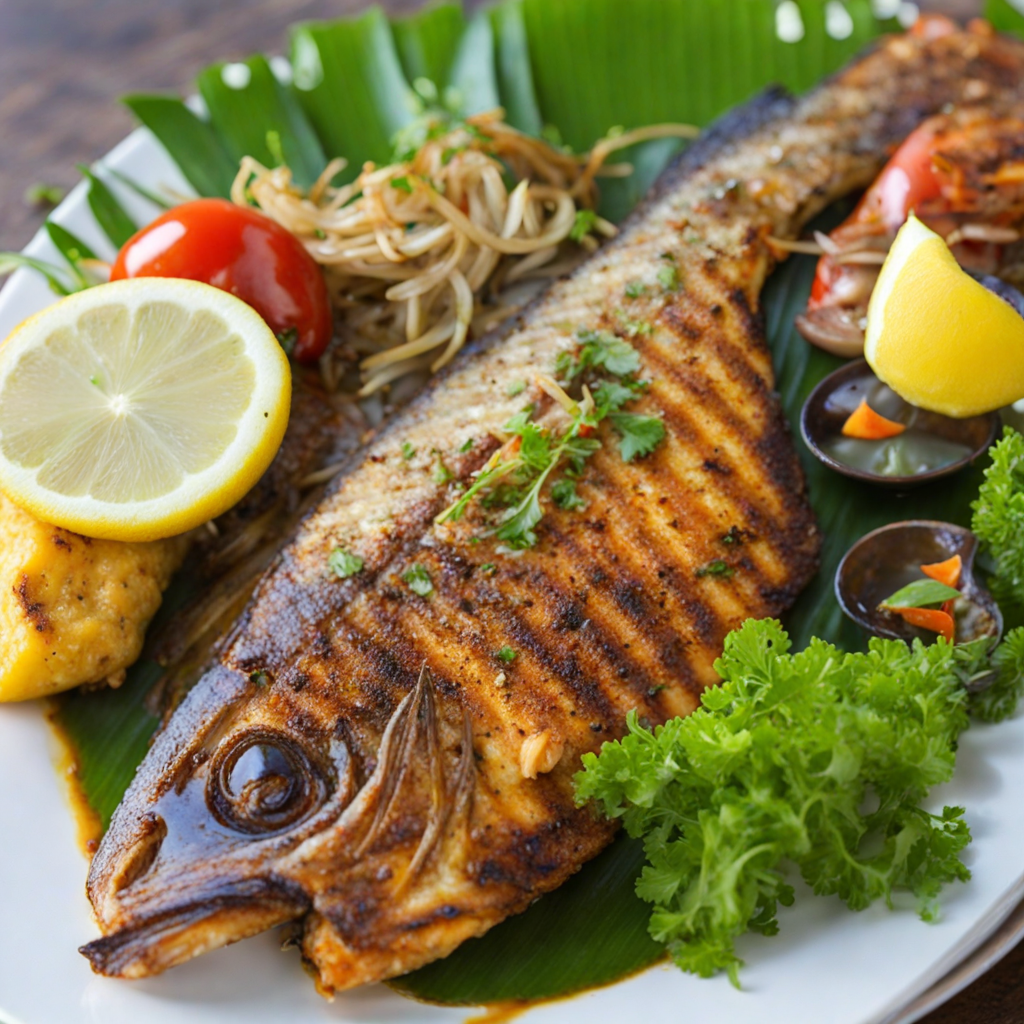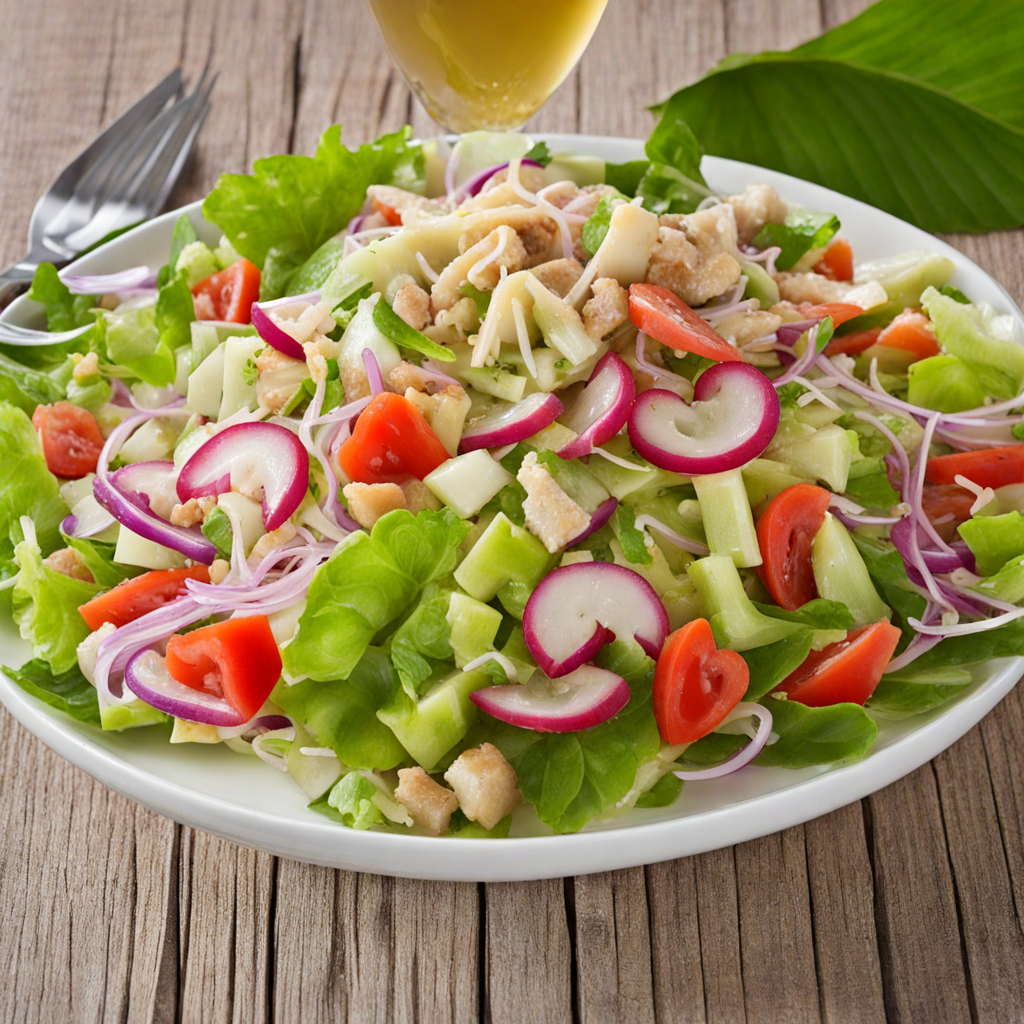Carotte Bananas
Carotte Bananas is a remarkable dish hailing from the stunning archipelago of Seychelles, where vibrant flavors and fresh ingredients come together in a harmonious blend. This dish primarily features a unique variety of bananas, often referred to as 'carotte' bananas due to their striking orange hue and sweet, luscious taste. These bananas are known for their creamy texture and are typically harvested when just ripe, ensuring they bring a delightful sweetness that complements the other components of the dish. The use of locally sourced ingredients not only enhances the flavor but also showcases the rich agricultural heritage of the islands. The preparation of Carotte Bananas involves a delightful combination of cooking techniques that highlight the bananas' natural sweetness. Often, they are lightly sautéed with a dash of coconut oil, which adds a rich, tropical aroma. The dish is frequently garnished with a sprinkle of fresh cinnamon or grated coconut, which provides an inviting crunch and an aromatic lift. Some variations may include a drizzle of honey or a squeeze of lime to elevate the flavor profile, creating a perfect balance of sweetness and tanginess that dances on the palate. Served warm, Carotte Bananas can be enjoyed as a standalone dessert or paired with a scoop of creamy vanilla ice cream for an indulgent treat. The combination of the soft, sweet bananas with the cold ice cream creates a delightful contrast that is both refreshing and satisfying. This dish is not just a dessert; it embodies the spirit of Seychelles, where the lush landscapes and diverse culinary traditions come alive in every bite. For anyone seeking a new taste experience, Carotte Bananas offers a unique glimpse into the flavors of this island paradise.
How It Became This Dish
The Engaging History of Bannann Karot: A Culinary Gem from Seychelles Bannann Karot, a deliciously simple yet deeply significant dish from the Seychelles, embodies the rich tapestry of cultural influences that have shaped the islands' history. This humble dish, made primarily from ripe bananas and grated carrots, serves as a testament to the blend of African, Asian, and European culinary traditions that converge in this idyllic archipelago. To fully appreciate Bannann Karot, we must journey through its origins, cultural significance, and its evolution over the years. #### Origins: A Melting Pot of Influences The Seychelles, an archipelago of 115 islands in the Indian Ocean, has a unique history characterized by its strategic location along ancient trade routes. The islands were uninhabited until the 18th century, when French settlers began to colonize them. They brought with them a variety of crops and culinary practices from both Europe and Africa. The introduction of bananas, a staple of many tropical diets, along with carrots, which were later popularized by European settlers, laid the groundwork for the creation of Bannann Karot. Bananas are believed to have originated in Southeast Asia, eventually making their way to Africa and the Indian Ocean islands through trade. The Seychellois variety of bananas is particularly sweet and flavorful, making them a perfect ingredient for both savory and sweet dishes. Carrots, on the other hand, were introduced by European colonizers and quickly adapted to the local agricultural practices, thriving in the rich volcanic soil of the islands. The melding of these ingredients reflects the broader foodways of Seychelles, where Creole cuisine emerged—a vibrant fusion of French, African, Chinese, and Indian influences. Bannann Karot, with its simple ingredients, can be seen as a microcosm of this culinary evolution, representing the adaptability and creativity of Seychellois cooks. #### Cultural Significance: A Celebration of Community and Heritage Bannann Karot is more than just a dish; it is a symbol of community, family gatherings, and cultural identity in Seychelles. Often prepared for special occasions, such as festivals, weddings, and communal feasts, it serves as a comforting reminder of home for many Seychellois. The preparation of Bannann Karot is typically a communal activity, bringing families and friends together to share in the joy of cooking and to pass down culinary traditions through generations. In Seychellois culture, food plays a crucial role in social interactions and celebrations. The act of sharing a meal—especially one that holds personal and cultural significance—reinforces bonds within families and communities. Bannann Karot, with its vibrant colors and aromatic flavors, is often served alongside other traditional dishes, such as grilled fish, coconut curry, and rice, creating a feast that reflects the island's diverse culinary heritage. The dish also holds a special place in the hearts of Seychellois people as it is often associated with childhood memories and familial love. Grandmothers and mothers passing down the recipe, tweaking it with their own special touches, create a sense of continuity and connection to the past. For many, Bannann Karot is not just a recipe; it is a narrative woven into the fabric of their lives. #### Development Over Time: From Tradition to Modernity As the Seychelles has evolved over the years, so too has the way Bannann Karot is prepared and consumed. Traditionally, this dish was made using simple techniques—grating the carrots and mashing the bananas by hand. However, with the advent of modern kitchen appliances and an increasingly globalized culinary scene, the preparation of Bannann Karot has seen some changes. In contemporary kitchens, the use of food processors has streamlined the preparation process, allowing for a quicker and more efficient creation of the dish. Some chefs have begun experimenting with the basic recipe, incorporating additional ingredients such as spices, nuts, or dried fruits, which not only enhance the flavor but also add nutritional value. For instance, a sprinkle of cinnamon or a handful of raisins can transform the dish, allowing it to appeal to modern palates while still honoring its traditional roots. Moreover, as Seychelles becomes a popular tourist destination, Bannann Karot has garnered attention from chefs and food enthusiasts around the world. Restaurants in Seychelles often feature this dish on their menus, presenting it in innovative ways that reflect both local and international culinary trends. This has resulted in a renewed interest in Seychellois cuisine, with Bannann Karot serving as a delightful ambassador of the islands' rich food culture. #### The Future of Bannann Karot Looking ahead, the future of Bannann Karot appears bright as it continues to adapt to changing tastes and lifestyles. With the increasing global focus on health and well-being, the dish's inherent simplicity and nutritious ingredients position it well for the modern dining scene. As people become more interested in plant-based diets and sustainable eating practices, the appeal of a dish that is naturally vegetarian and made from wholesome ingredients is likely to grow. Additionally, the ongoing efforts to preserve and promote Seychellois culture and cuisine can help ensure that Bannann Karot remains a beloved dish for generations to come. Culinary workshops, food festivals, and cultural exchanges provide opportunities for younger generations to learn about their culinary heritage while also experimenting with new flavors and techniques. In conclusion, Bannann Karot is more than just a dish of bananas and carrots; it is a vibrant expression of the Seychelles' history, culture, and community. As it evolves over time, it serves as a bridge between the past and the present, connecting Seychellois people to their roots while inviting the world to experience the flavors of this enchanting archipelago. Whether enjoyed at a family gathering or a gourmet restaurant, Bannann Karot continues to be a symbol of the island's rich culinary legacy, nourishing both body and soul.
You may like
Discover local flavors from Seychelles


